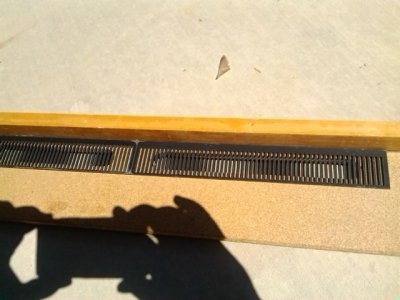With four 10" slots, covered by slotted grates, the linear inches of weir would be reduced to the sum of the space water can pass through. Depending on the width of this space, the linear length could be reduced to as little as 1/3 to 1/4 of that 40". This is the "effective length," and is the only number that is relevant.
Since weirs involve water in motion, having a rule of thumb or guidline relating tank
volume to weir length would not make any sense. Since a weir is a device used to alter flow characteristics, and provides a simple method to determine open channel volumetric flow rate, we could infer an indirect relationship between volume and weir length using arbitrary rules of thumb concerning volume and flow rate. However, this would not really solve much, as the volume vs flow rate debate has gone on for years, with no resolution, and no doubt will continue for years to come.
Saying "successful x size tank at y inches of overflow", is too subjective to be used as a data point, and "failed x size tank with y inches of overlfow," is just as likely. When it comes to corner overflows, these are not installed based on the system as a whole, or the degree of benefit, rather it is based on what will sell in terms of visual appeal. So we need another method to determine what benefits the system the most. This of course lands right in the middle of physics.
On Bean's website, there is a sidebar that explains the "why" in a rather easy to understand way. This why has appeared in this thread and others a multitude of times, so there is little to gain from reiterating it again; but there is an indisputable guideline that relates tank size, flow rate, and weir length. It is indisputable because it is based on physics, (includes physics that drive some of the sub-systems we use) rather than opinion, anecdote, visual appeal, or convenience.
Simply: For any given flow rate, in any given size tank, the longer the effective length of the "weir," (overflow) the more benefit it will be to the system. Thus we can conclude that the most benefit will be achieved by a weir that is the full length of the longest side of the tank.
Even considering the nature of this guideline, many like to debate the "coast to coast." These debates are invariably driven by varying degrees of opinion, anecdote, visual appeal, and convenience. Usually, it comes in the form of "how much is needed;" the answer is pretty obvious: what is needed is what provides the most benefit. In the end, this is probably one of a very short list of "rules-of-thumb" and/or guidelines that actually have some useful meaning.
http://www.beananimal.com/projects/silent-and-fail-safe-aquarium-overflow-system.aspx
